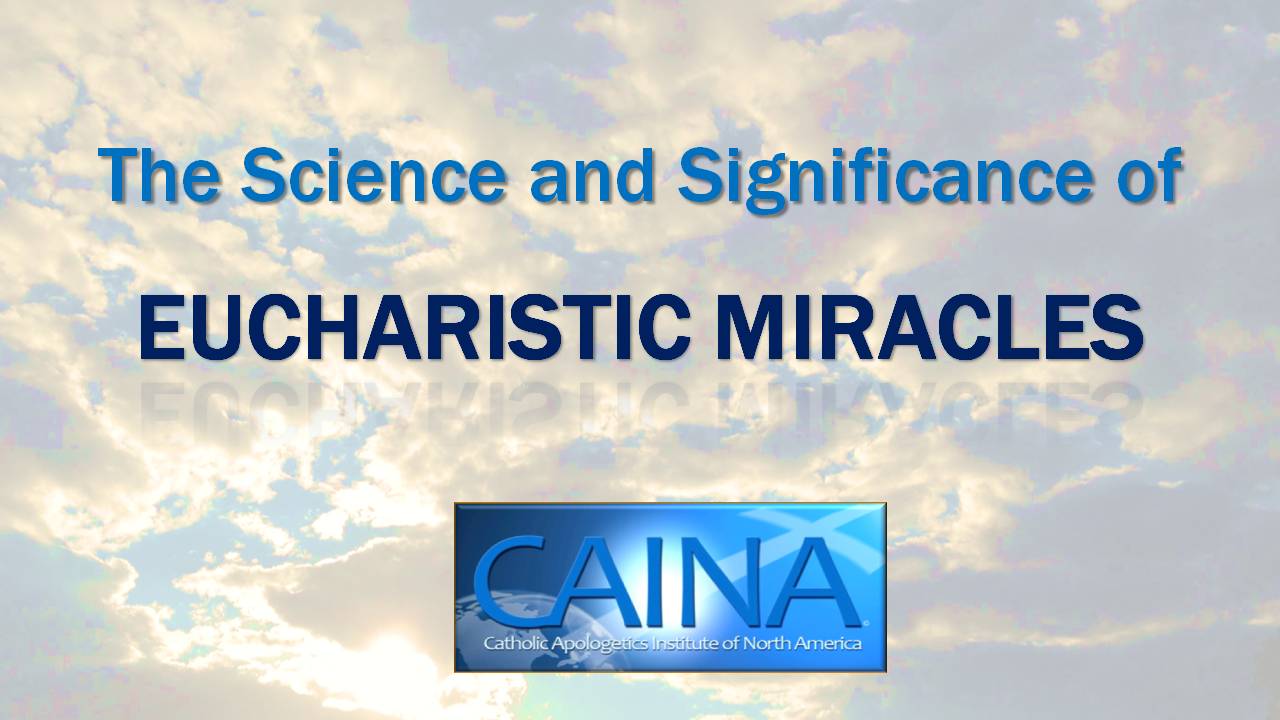The Science and Significance of Eucharistic Miracles
Presentation Overview:
This presentation provides an overview of some of the over one hundred Eucharistic miracles that have occurred worldwide over many centuries, especially five that have been scientifically studied.
Most Eucharistic miracles involve incidences in which the host has “turned into human flesh and blood.” The constant teaching of the Catholic Church, since the beginning, is that the consecrated host and wine are really and truly the Body, Blood, Soul, and Divinity of our Lord Jesus Christ, under the appearance of bread and wine. This teaching is based on the testimony of Jesus himself who said, “This is my body, which will be given for you; do this in memory of me” (Luke 22:19), and who promised, “Whoever eats my flesh and drinks my blood has eternal life, and I will raise him on the last day” (John 6:54).
But most people today, even many Catholics, doubt this teaching. Therefore, Jesus, through Eucharistic miracles provides a more tangible way to help dispel doubts about his Real Presence in the Eucharist. The findings of scientific studies of several Eucharistic miracles are amazing and have the same characteristics, including the host becoming human heart muscle tissue under severe stress and with the same blood type as the Shroud of Turin. These scientific studies provide compelling evidence that Eucharistic miracles are indeed divine interventions that manifest the Real Presence of the Body and Blood of Jesus Christ in the Holy Eucharist.
At Mass, Jesus offers us his living heart in the Holy Eucharist, a heart that suffered for love of us. As stated by Jeannette Williams regarding the findings of scientific studies of Eucharistic miracles: “It’s as if Jesus, by transforming into a human heart, is crying out to us, ‘I’m here! I love you! My heart yearns for you! Was not my crucifixion enough to prove my love for you? See, then, and believe. I have remained hidden in the Eucharist for these two thousand years that I may remain close to you. Please, approach me. Receive me. Quench my thirst for your love’.”
For more information, please see:
- View/Download PowerPoint Slides (without videos): The Science and Significance of Eucharistic Miracles
Click/tap image below to watch a free video on CMAX.TV of CAINA’s presentation The Science and Significance of Eucharistic Miracles given by Steven Hemler:
Video about the Eucharistic Miracle of Buenos Aires:
Video about the Miracles of the Eucharist
Video about the Scientific Evidence of Eucharistic Miracles
Full Interview on Eucharistic Miracles with Cardiologist Dr. Franco Serafini

